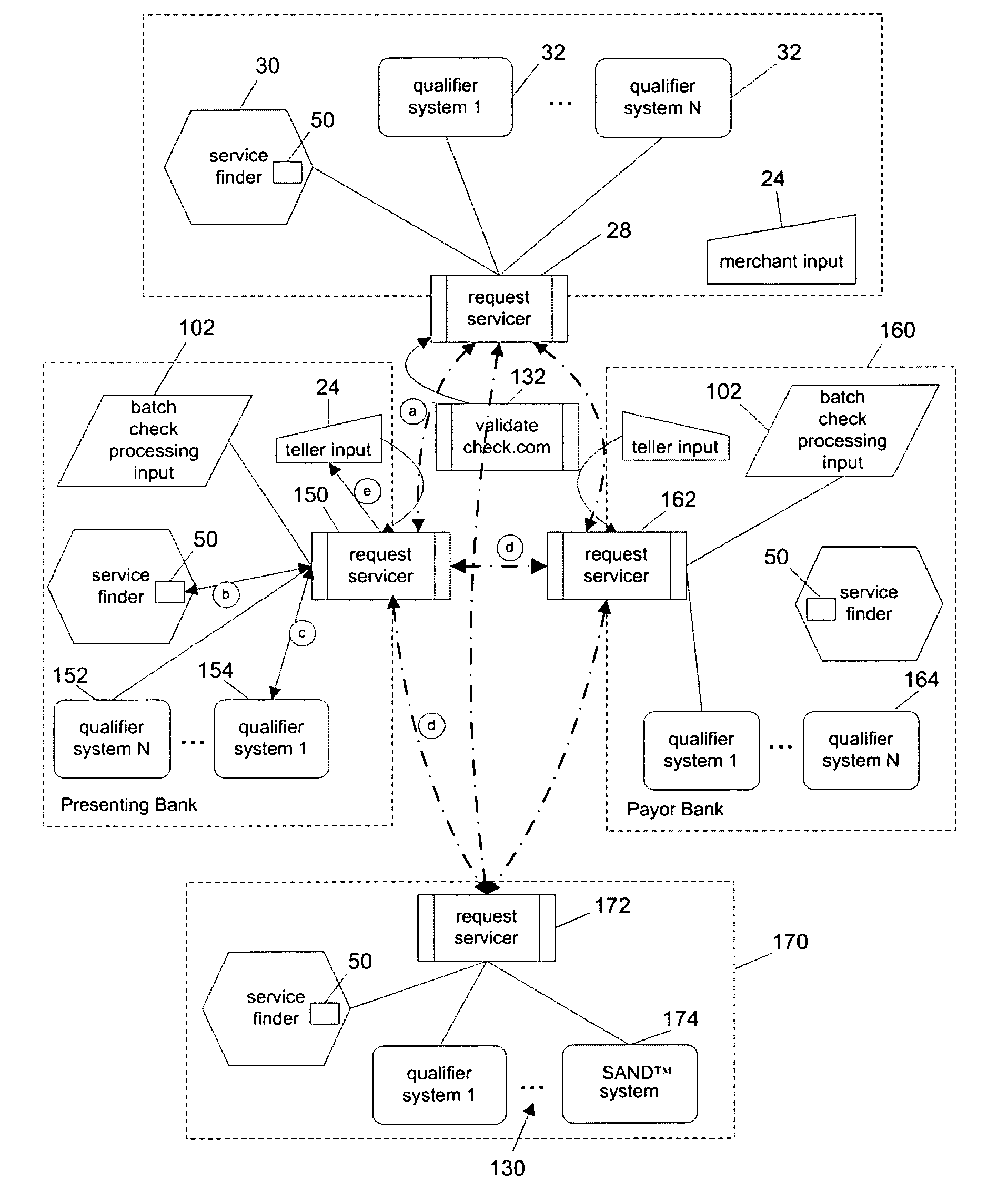Payment validation network
a payment validation and network technology, applied in payment protocols, data switching details, instruments, etc., can solve problems such as payees, merchants and other payees being exposed to risk, and check may be fraudulent, so as to reduce the delay in data upload and improve analysis
- Summary
- Abstract
- Description
- Claims
- Application Information
AI Technical Summary
Benefits of technology
Problems solved by technology
Method used
Image
Examples
Embodiment Construction
[0031]In the following description, the following terms are defined as follows:
[0032]“Homogenous validation assessment”—a normalized estimation of the risk of loss in accepting a check, based on the results of one or more transaction validation processes. In the preferred embodiment, this normalized estimation is expressed in two dimensions: (i) the probability that the check is properly issued, e.g., that the check document is authentic, not forged or counterfeit, and / or that the information conveyed by that document is not forged, counterfeit, altered or otherwise used without authorization; and (ii) the likelihood of the check clearing the settlement process. The estimation in any dimension depends in part on the character of the validation result(s) that go into assessing the value of the dimension—precise or determinative validation results will typically be weighted higher than non-precise or indeterminate validation results.
[0033]“Payment data”—generally refers to payment ins...
PUM
 Login to View More
Login to View More Abstract
Description
Claims
Application Information
 Login to View More
Login to View More - R&D
- Intellectual Property
- Life Sciences
- Materials
- Tech Scout
- Unparalleled Data Quality
- Higher Quality Content
- 60% Fewer Hallucinations
Browse by: Latest US Patents, China's latest patents, Technical Efficacy Thesaurus, Application Domain, Technology Topic, Popular Technical Reports.
© 2025 PatSnap. All rights reserved.Legal|Privacy policy|Modern Slavery Act Transparency Statement|Sitemap|About US| Contact US: help@patsnap.com



